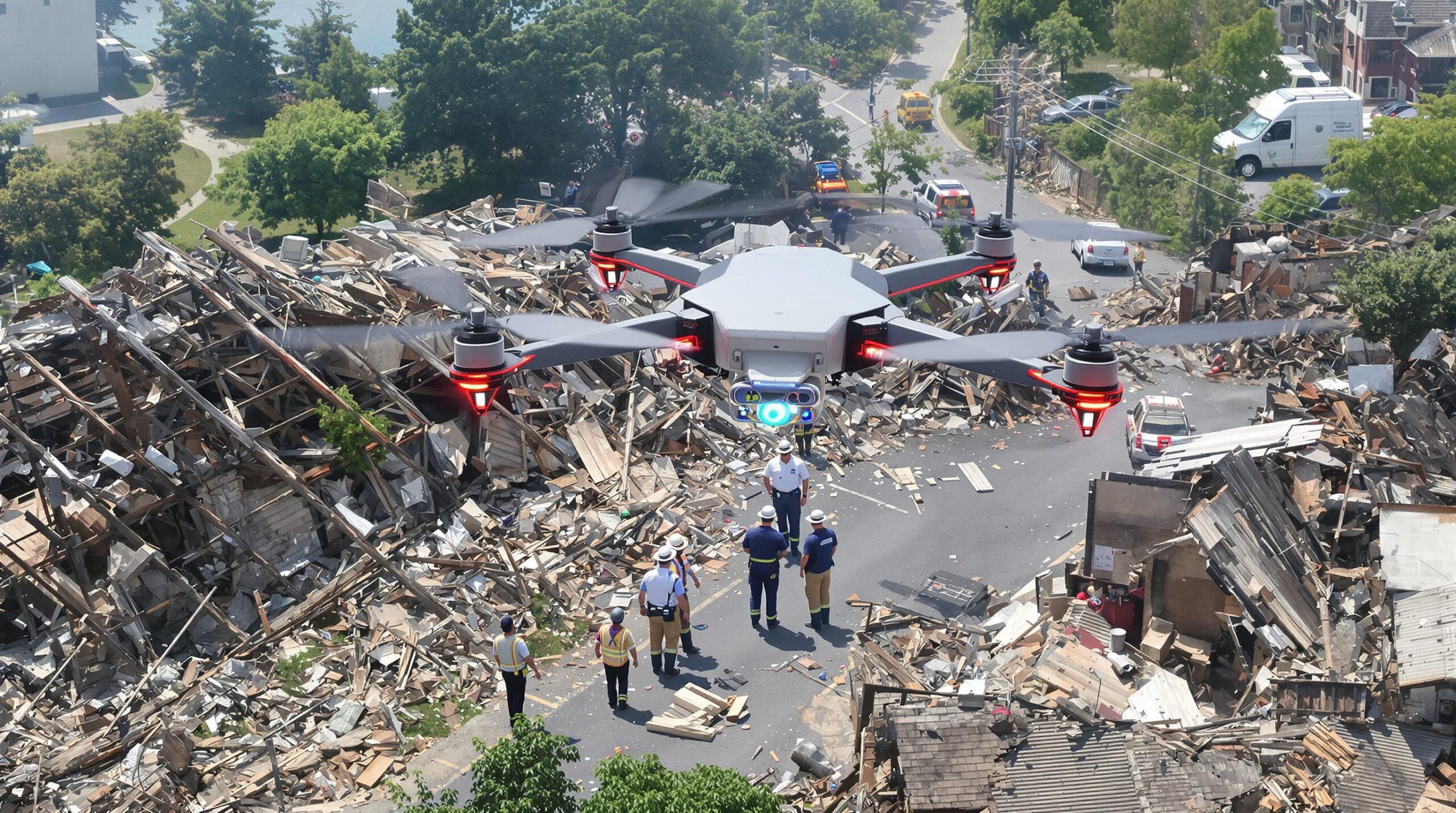Artificial Intelligence (AI) and drone technology are shaping the future of disaster response. These advanced systems enable faster and safer rescue missions. First responders, governments, and humanitarian organizations are turning to AI-powered drones for enhanced situational awareness. Through precision and automation, AI-driven drones are making a substantial impact on emergency management worldwide.
The Role of Drones in Disaster Response
Drones equipped with high-resolution cameras and sensors can quickly access hazardous or hard-to-reach locations. Traditional methods often struggle with damaged infrastructure or dangerous conditions. By flying over affected zones, drones capture real-time imagery and critical environmental data. This information helps teams plan and make decisions during crisis moments. With the rise of AI integration, the effectiveness and reliability of drones in these roles continue to grow.
Integration of Artificial Intelligence
Advanced AI algorithms process large volumes of drone-captured images and sensor readings almost instantly. Deep learning models, for example, can identify collapsed buildings, blocked roads, and survivors. Intelligent mapping enables rapid generation of detailed, updated disaster maps. This minimizes manual work and eliminates delays. The combination of AI and drones means accurate, real-time feedback is available to emergency teams on the ground.
Accelerating Search and Rescue Operations
During natural disasters, time is critical. AI-powered drones automate search patterns far more efficiently than human crews or ground vehicles. By processing visual and thermal data, drones recognize heat signatures and movement that may indicate trapped survivors. Even in vast or debris-covered disaster areas, AI can distinguish people from objects or animals with remarkable accuracy. As a result, rescue workers are guided to the precise location of those in need, which increases their chances of survival.
Automated Damage Assessment and Reporting
After a disaster, authorities must quickly evaluate the extent of the damage. AI-powered drones use machine vision to scan affected regions and classify the severity of destruction. They automatically create 3D maps of landscapes, highlighting buildings, roads, and infrastructure needing urgent repair. These fast, accurate reports help relief agencies prioritize resources where they are needed most. This automation speeds up both short-term aid delivery and long-term rebuilding efforts.
Enhancing Human Safety in Dangerous Conditions
Human responders often risk their lives during dangerous rescue attempts. Floods, fires, earthquakes, or chemical spills can make many areas inaccessible or hazardous. Drones with AI reduce this risk by replacing initial human surveys with unmanned flights. These drones can detect of dangerous substances, unstable structures, and other threats from a safe distance. By performing reconnaissance and monitoring, drones minimize physical exposure for emergency teams. This significantly improves the overall safety of disaster response operations.
Real-World Applications and Success Stories
Major natural disasters have already demonstrated the value of AI-powered drones. In the aftermath of hurricanes, such as Hurricane Harvey in the United States, drones mapped flooded zones and guided rescue boats. During Nepal’s 2015 earthquake, drones provided immediate aerial images, supporting international rescue efforts. Wildfires in Australia and California used drones to track fire movements in real-time, predict spread patterns, and confirm safe evacuation routes. These cases highlight the life-saving potential of integrating AI and drones in emergency response strategies.
Partnerships and Collaborations
Many technology providers and humanitarian groups are working together to advance this field further. Collaborations between drone manufacturers, AI developers, and relief agencies have produced specialized hardware and cloud-based analytical tools. Organizations like UNICEF, the World Food Programme, and various Red Cross chapters have launched pilot programs using AI-powered drones for disaster preparedness. These partnerships aim to ensure that critical innovations reach the affected communities swiftly and sustainably.
Challenges in AI-Driven Disaster Response
Despite rapid progress, several challenges remain in deploying AI-powered drones at scale. Regulatory restrictions around airspace and privacy can delay drone operations in emergencies. Power limitations constrain flight time, especially in large or remote areas affected by the disaster. AI algorithms require diverse data and ongoing training to avoid misidentification or false positives. Data security is also a rising concern, given the sensitive nature of disaster response information. Continued investment and international cooperation are crucial for overcoming these obstacles.
The Future of AI and Drone Collaboration
Emerging technologies will only make AI-powered drones more capable over time. The integration of satellite connectivity will expand operational ranges and provide uninterrupted data links in disaster zones. Advances in edge computing enable quicker data analysis directly on the drone, reducing dependence on remote servers. Swarm technology could enable fleets of drones to work in coordination, mapping or searching massive regions more efficiently. As governments and organizations recognize these advantages, AI-powered drones are poised to become a vital tool in crisis management.
Preparing the Next Generation of Responders
Training emergency teams to operate AI-powered drones is increasingly emphasized in disaster preparedness programs. These teams need both technical skills to handle drone operations and analytical skills to interpret insights driven by AI. Educational institutions are starting to offer courses on drone technology and AI for use in emergency services. As more responders acquire these skills, the potential for fast and effective intervention during disasters will continue to grow.
Conclusion
AI-powered drones are transforming how responders approach disaster management. Faster, more accurate information translates to saved lives and efficient resource use. Challenges exist, but ongoing innovation and collaboration are helping to bridge the gaps. As this field evolves, the synergy between artificial intelligence and drone technology promises a safer, more prepared world when disaster strikes.

